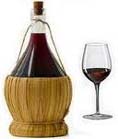
Home Freezers - 2
|
|
|
<< Previous Page 2
Here are some more tips on home freezers.
Freezing
The quicker the food is frozen, the smaller are the ice-crystals formed in it and the better the texture and flavour. Ideally, freezing should be done at -12F and in some cases temperature can be brought up to -5F. But it would be unnecessarily costly to maintain the low temperature, so most freezers operate for storage of foods a 0F or just under.
Defrosting of a chest-type freezer is normally only necessary once or twice a year; upright freezers, which frost up more quickly because warm air gets in each time the door is opened, perhaps need to be defrosted three or four times a year. The upright type is easier to defrost and to keep clean and, if you are below average height, you will probably find it easier to use than the chest type. It is not essential to keep a freezer in the kitchen. You will not, after all, be opening it as often as a refirgerator. Choose an area that is cool and well ventilated; it can be a garage, passageway or an outhouse.
Packaging
Food that is to be frozen has to be carefully packaged to stop it drying out and to keep in the flavour. Special containers are available at most large stores for this purpose.
The fittings in home freezers vary. Removable baskets or open trays are usually sold for chest-type freezers. This makes packing and selection of food easier, but shelves and baskets do take up space. Other freezers come without any fittings. Upright freezers have shelves or baskets which may slide out or be removed to give deeper storage space if needed.
More advice about home freezers:
Storage time
The instruction books given with the freezers usually give the storage time of food. This is only a guide; it has nothing to do with the safety of food, but with its eating quality, so individuals may react quite differently to food kept frozen for longer perios - some would notice no change in flavour, others would.
A freezer is not the same as a refrigerator. It is specially designed to freeze fresh produce and keep it safely at 0F for up to one year. A refrigerator keeps perishable foods fresh, and for limited periods will store already frozen food. The "freezer" compartment in an ordinary refrigerator is not for freezing food.
Freezing and packaging
If air gets into contact with freezing or frozen food, it can cause discoloration and it also slows down the freezing process. The whole purpose of careful wrapping is to help to achieve a good result and ordinary wrapping materials will not do because they are not sufficiently air resistant. The basic equipment that no one can do without is polythene bags and some kind of container - plastic, waxed or aluminium - for liquids.
The teperatures in a freezer are too low for long-term storage of ffod in ordinary glass or chine containers. In any case, it is not very economical to have dishes like this out of action for any length of time.
A notable exception is Pyrosil, which can be taken straight from the freezer and put into a hot oven without risk.
Page 1 of this article about home freezers can be found on the previous page.
<< Previous Page 2
Read more Italian traditional food related articles here
- cook
- italian
- fish
- recipe
- meat
- food
- dish
- bread
- recipes
- sauce
- dessert
- cooking
- cheese
- herbs
- italian traditional food
- traditional
- pasta
- traditional food
- olive oil
- meal

Copyright © 2009 - . All Rights Reserved Worldwide. Italian Traditional Food
You may not reprint articles from this website without the written permission of the site owner.
Disclaimer: Articles on this Website are provided for information purposes only. Italiantraditionalfood.com does not accept any responsibility or liability for the use or misuse of the article content on this site or reliance by any person on the site's contents.
|

Latest Articles
|
|
COMMENTS 'Great recipes and a great site...' 'At long last, a recipe site that delivers good basic food...' 'Tasty and easy to make recipes. What more can you ask for?...' 'Please keep on providing these rustic recipes as I enjoyed them very much....' 'Not only some great recipes but also some great articles. Thanks." 'What a good idea to provide these recipes. Keep up the good work.' 'Lots of very intresting articles on all aspects of the Italian lifestyle...' 'Wishing you every success with your great new recipe site.." 'Good to see some authentic Italian rustic recipes..." 'The step-by-step recipes are very easy to follow. Thank you.' 'It is so much easier to follow the Italian food recipes thanks to the step by step photos." '...thank you for publishing this selection of rural dishes. They are fast becoming part of my staple diet.' |
Copyright © 2009 - . All Rights Reserved Worldwide. Italian Traditional Food
 Digg
Digg Stumbleupon
Stumbleupon Google Bookmarks
Google Bookmarks Delicious
Delicious Twitter
Twitter Facebook
Facebook Yahoo My Web
Yahoo My Web Reddit
Reddit